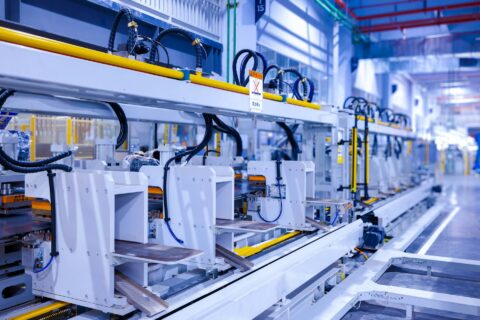The traditional image of a classroom, with rows of students facing a teacher at the blackboard, is being redefined by the digital landscape.
The integration of technology in education is not a trend but a transformative wave that promises to make learning more accessible, engaging, and effective.
Whether you are a student, an educator, or a lifelong learner, it’s crucial to understand that e-learning, propelled by innovative technologies, is not just an alternative it’s the future of education.
The Digital Shift in Learning
The advent of the internet catapulted society into the information age, impacting every facet of life, education not least among them. The traditional learning model, which necessitated the physical presence of students and teachers, is evolving into a more dynamic, digital experience.
As we navigate through the advancements in education, technology continues to play a pivotal role in reshaping how we learn and interact with educational content.
One significant aspect of this transformation is the accessibility of resources, providing learners with the ability to easily seek assistance and support for various needs.
For example, when faced with issues such as malfunctioning appliances, learners can quickly find solutions like fridge repair near me, ensuring that their home environments remain conducive to study and productivity.
This integration of technology not only enhances the learning experience but also encourages a more balanced approach to education and daily life.
Interactive Learning Environments
E-learning is no longer about passively consuming content. Interactive learning environments encourage students to engage actively with the material through simulations, gamification, and virtual laboratories.
Customized Learning Paths
Technology allows for a more individualized approach to learning. With adaptive learning software, students can follow customized paths based on their pace, style, and performance, ensuring that no one is left behind, and no one is held back.
Global Access to Education
The borders of the classroom are expanding. E-learning transcends geographical barriers, enabling students to access educational resources from the world’s top institutions without leaving their homes.
Technologies at the Forefront
Several key technologies are steering the e-learning revolution, each offering unique opportunities to reshape the educational experience.
AI and Machine Learning
Artificial intelligence and machine learning power adaptive learning platforms, chatbots for instant feedback, and the personalization of learning.
Virtual and Augmented Reality
Immersive technologies like VR and AR bring educational scenarios to life, enabling students to tour historical sites, explore the human body, and even conduct complex industrial training in a safe virtual environment.
MOOCs and Online Platforms
Massive Open Online Courses (MOOCs) like Coursera and platforms like Khan Academy and edX have become household names, democratizing knowledge for anyone with an internet connection.
Bridging Gaps with Tech-Enabled Education
E-learning isn’t just about convenience; it’s an essential tool for bridging educational gaps and ensuring that education reaches all corners of the globe.
Lifelong Learning Opportunities
With digital technology, learning doesn’t have to stop after graduation. Adults can upskill and reskill with the click of a button, improving their prospects in an increasingly competitive job market.
Inclusion and Accessibility
Technology is a powerful force for inclusivity, providing alternative learning pathways for those with disabilities and creating more affordable education options for underserved communities.
Combating the Knowledge Divide
The digital divide is a significant challenge, but technological advancements are making it easier to bridge this gap. Wi-Fi hotspots, affordable devices, and consortiums promoting universal access mean that no one needs to be left out of the education revolution.
Challenges and Considerations
Despite the rapid advancement of e-learning, challenges such as digital literacy, quality control, and the ability to replicate hands-on experiences through a screen, remain.
Addressing Technological Barriers
Ensuring access to the necessary technology and skills is critical. Initiatives ranging from government policy to corporate social responsibility programs are working to provide the tools and training required.
Maintaining the Human Element
While technology is a powerful facilitator, it’s the human aspect of education that inspires learning. Educators must adapt their roles, becoming facilitators, motivators, and mentors in the e-learning environment.
Redefining Assessments
Traditional assessment methods may not always be suitable in the digital context. New approaches and tools are essential for accurately measuring learning outcomes in e-learning.
The Future Is Here, and Its Digital
E-learning is not a fad. It’s a fundamental reshaping of how we perceive and deliver education. With each technological breakthrough, more doors open to once unimaginable learning opportunities.
Path Forward in Education
The future of learning is a blend of traditional and digital models, with technology enhancing the learning experience and outcomes for students worldwide.
Lifelong Learning as a Norm
The concept of lifelong learning has never been more relevant. In a world that constantly evolves, the ability and the inclination—to continuously learn and adapt will be an invaluable asset.
A Global Learning Community
The walls of the classroom are vanishing, giving way to a global community of learners. With technology as the great equalizer, education’s new currency is the drive and commitment to learn, not one’s physical location or background.
In conclusion, the rise of e-learning is revolutionizing education by leveraging technology to enhance access, personalization, and flexibility.
This transformation is not without challenges, but the opportunities it presents for inclusive and lifelong learning are unprecedented.
As we stand on the cusp of an educational renaissance, it’s clear that technology is the catalyst propelling us into a brighter, more interconnected future of learning.









